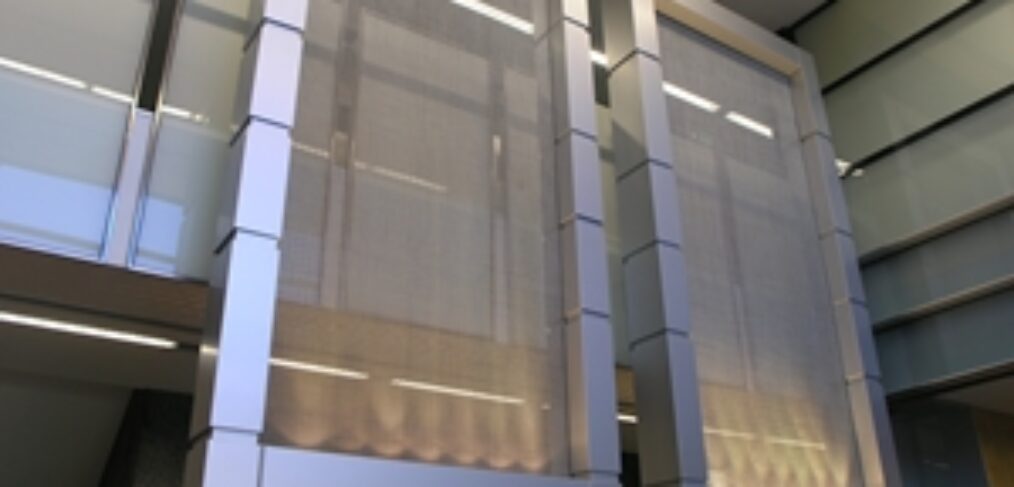
Why choose a galvanised metal?
Finding the right material for a specific project means longer lasting and generally better results. Using the best metal for the specific conditions faced within a facility or given environment helps address issues like rusting and corrosion, improving structural integrity and appearance. Taking the time to research your options and select the most effective metal for your specific needs can pay off for years and even decades to come.
Let's take a closer look at the galvanising process and how it's utilised to enhance key attributes of steel. With this information in mind, you can make an informed choice about selecting the best wire mesh and finding other suitable applications for galvanised steel.

What is galvanisation?
Galvanisation addresses a major issue with iron and the alloys that contain it, like steel. Rust ultimately affects these metals. While the process may be very slow under certain conditions, it's inevitable. And in situations where untreated steel is exposed to particularly moist or wet environments, rust and corrosion can start to cause problems quickly.
Galvanisation helps steel last longer, improving its resistance to corrosive processes and therefore slowing the spread of rust. The protective coating created through galvanisation is durable and stable, offering decades of protection from the continual loss of structural integrity that rust promotes.
There are a few processes used to galvanise metals:
- Hot dip galvanisation involves submerging a piece of metal into a bath of hot zinc. This is common for larger pieces of metal and many applications in general.
- Electrogalvanising is a form of electroplating and is common in the automotive sector.
- Thermal diffusion galvanisation uses a drum and heat to combine smaller or more complex pieces of iron or steel with zinc.
The result of all of these processes is a zinc coating that creates a barrier between the steel and the moisture content of the surrounding atmosphere. Galvanisation offers a number of benefits in terms of protection. While it fully coats the underlying metal, it also can be scratched or otherwise compromised in small areas and still provide resistance to rust.
While the coating will eventually wear off, this is an especially slow process outside of situations where the galvanised steel is consistently exposed to salt water or high levels of acidity. In those cases, stainless steel may prove to be a better choice.
Why should you choose galvanised steel for your project?
Protection against rust is the foundational benefit of galvanisation. The layer of zinc on galvanised metals allows architects and builders to use this material in a much broader variety of applications, both interior and exterior. The many other benefits of steel – like its high level of strength relative to weight and resistance to many types of deformation – stand out even more when you give it protection against one of its few weaknesses.
Cost is another factor to consider in terms of rust protection. Galvanisation is an economical process that doesn't drastically increase the price of the treated steel. Other types of protective coatings can be more costly, or wear away in less time, increasing the long-term price tag. Aside from situations in which the treated steel faces continued exposure to salt water or extreme acidity, galvanisation offers a strong value for companies.
While galvanisation wouldn't hold much value if it didn't provide strong, long-lasting protection from rust, there are other benefits to be had from this process. Hot dip galvanisation has a striking aesthetic side effect, creating a pattern called spangle on the finished metal. This unique pattern often appears as irregular shapes on the surface of the metal, each of which will catch and reflect light slightly differently. This variation in shades of the underlying silver colour is unique to the hot dip galvanising process.
The exact appearance of spangle can be adjusted by the company coating the steel, offering pronounced results or a more uniform and understated appearance. This can be beneficial when specific design considerations come into play. Depending on the specific vision of architects and other project stakeholders, various finishes are possible without compromising the rust protection offered by galvanisation.
Partnering with a dependable provider of galvanised steel
Finding a trustworthy company to provide your project with high-quality galvanised steel is critical. With the right partner, you know all of your galvanised steel – from wire mesh to walkways – will be of a high quality and last for many years to come.
To learn how Locker can connect your construction project with the galvanised steel it needs for a variety of applications, get in touch with us today.



